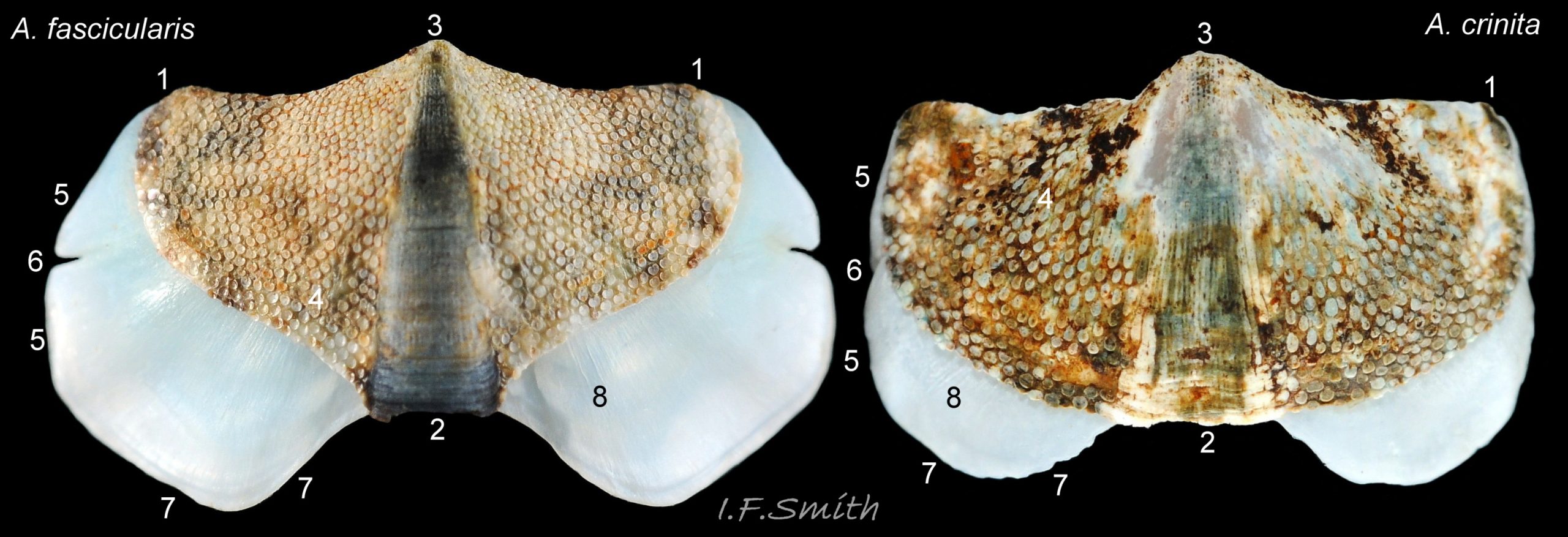A. fascicularis (left), half grown, valve v and A. crinita (right), very large adult, valve vi. Both chitons 26 mm long and photographed at same scale.
Outline of coloured tegmentum on:
A. fascicularis is approximately broadly triangular with rounded lateral angles (1), a flattened anterior angle known as the jugal sinus (2) , and a narrow protruding posterior beak (3).
A. crinita is like a drawn bow with sharp angles (1) where straight ‘string’ meets D-curved bow, a jugal sinus (2) that continues the curve either side of it, and a broad, protruding, posterior beak (3).
N.B. precise details of intermediate valve outline vary, even on a single specimen of A. fascicularis; compare valves ii and vii on image Af8.
Valve granules (apart from narrow triangular jugal area) on:
A. fascicularis are circular, crowded, evenly distributed, uniformly small, and flat topped often with a raised rim (4).
A. crinita are assorted round/oval/tear shape, uncrowded, unevenly distributed, mixed large and small, with flat tops tilted down to the posterior.
In dorsal view, the white articulamentum of valves ii to vii on:
A. fascicularis is about as extensive as the coloured tegmentum, extending into large lateral insertion plates (5) and very large apophyses (7).
A. crinita is very much smaller than the tegmentum with small lateral insertion plates (5) and apophyses (7) that are much smaller than on A. fascicularis.
On both species there is a single notch (6) on each lateral insertion plate, and, sometimes, faint radial ridges (8) on the apophyses.
KEY ID FEATURES and similar species at: 01 Acanthochitona crinita

